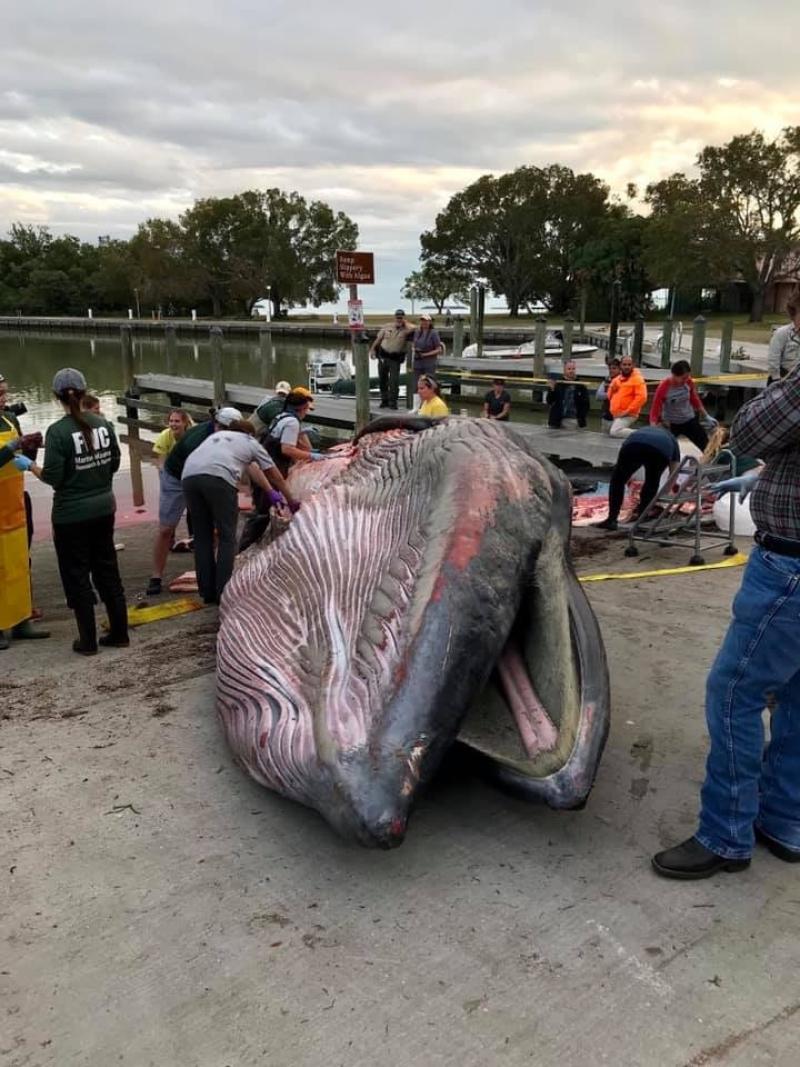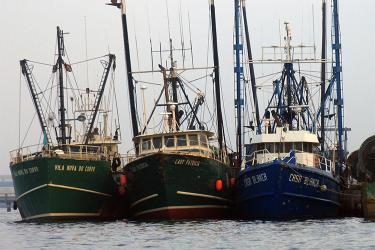The 38-foot male Bryde's whale washed up along Sandy Key in the Florida Everglades Tuesday, January 29. With the help of the Everglades National Park Service, biologists with NOAA, the Florida Fish and Wildlife Conservation Commission, Mote Marine Laboratory, Marine Animal Rescue Society, the University of Miami and Dolphins Plus Marine Mammal Responders have performed a necropsy (non-human autopsy) and taken samples from the whale to try to determine how it died.
During the examination, biologists noticed the whale was underweight and had a hard piece of plastic (approximately 3 inches by 2 inches in size) in its stomach. An exact cause of death has yet to be determined

Plastic found inside whale, Photo: FWC

Bryde's whale on flatbed for transport
Photo: Everglades National Park Service
If genetic analyses determine that this whale is indeed a Gulf of Mexico Bryde's whale, it is extremely rare. With likely less than 100 individuals remaining, Gulf of Mexico Bryde’s whales are the only resident baleen whale in the Gulf of Mexico. If listed, it would become one of the most endangered whales in the world.
Update 3/19/19
Download File (PDF depicting DNA sequencing)
The whale's skeleton will be sent to the Smithsonian National Museum of Natural History where it will be archived.



